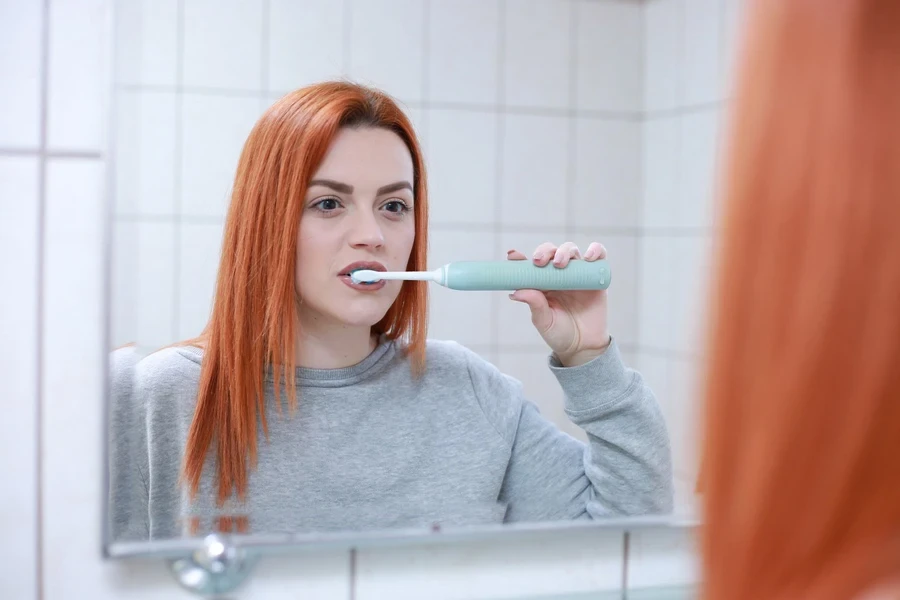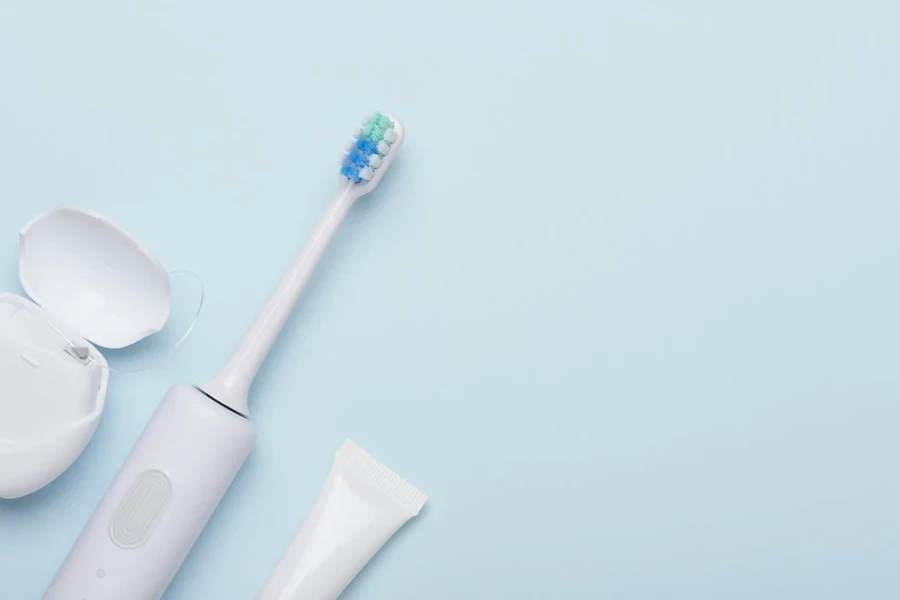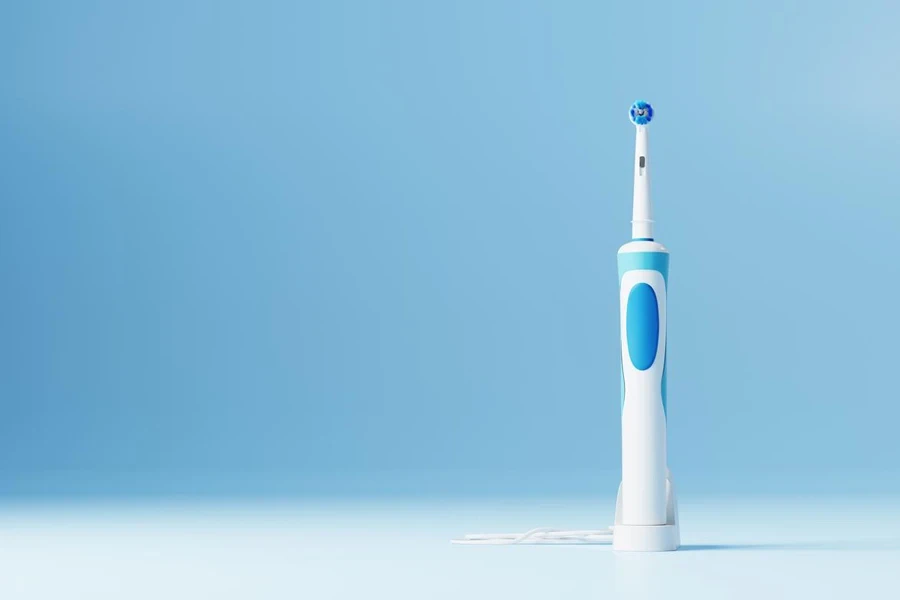Table of Contents
1. Introduction
2. Understanding types and usage of sonic toothbrushes
3. Current market overview for sonic toothbrushes
4. Key considerations for selecting sonic toothbrushes
5. Leading sonic toothbrush models and their features in 2025
6. Conclusion
Introduction
Sonic toothbrushes are revolutionizing dental hygiene with their advanced technology and superior cleaning capabilities. These devices use high-frequency vibrations to create dynamic fluid action, reaching deep between teeth and along the gum line. This results in a more thorough clean compared to manual brushing. By effectively removing plaque and reducing gingivitis, sonic toothbrushes contribute to better oral health. Their popularity has surged in 2025, driven by the growing awareness of dental care benefits and technological advancements. Enhanced features like multiple brushing modes, pressure sensors, and smart connectivity options make sonic toothbrushes a preferred choice for achieving optimal oral hygiene.
Understanding types and usage of sonic toothbrushes

Different types of sonic toothbrushes
Sonic toothbrushes have transformed oral hygiene, offering advanced features that enhance dental care. These toothbrushes can be broadly categorized into basic, advanced, and kids’ models.
Basic Sonic Toothbrushes: Basic models provide essential features such as high-frequency vibrations to remove plaque effectively. They usually have one or two brushing modes and are budget-friendly, making them an excellent choice for those looking to switch from manual to electric brushing without a significant investment.
Advanced Sonic Toothbrushes: Advanced models come packed with multiple features, including several brushing modes, pressure sensors, and smart connectivity. These toothbrushes not only clean teeth but also help improve brushing techniques through real-time feedback.
Kids’ Sonic Toothbrushes: Designed specifically for children, these toothbrushes feature smaller brush heads, gentler vibrations, and often include engaging elements such as educational apps or fun designs to make brushing enjoyable.
Current market overview for sonic toothbrushes

Market growth and trends
The sonic toothbrush market has seen significant growth in recent years, driven by increasing awareness of oral hygiene and technological advancements. According to various market research reports, the global market for electric toothbrushes, including sonic models, is expected to reach new heights by 2025. This growth is attributed to the rising prevalence of dental diseases, the growing adoption of advanced dental care products, and the increasing disposable income of consumers.
Experts currently value the electric toothbrush market at approximately US$ 3.5 billion in 2023. They expect it to reach US$ 5.5 billion by 2028, estimating this growth at a compound annual growth rate (CAGR) of 9.5% from 2023 to 2028.
One of the notable trends in the market is the integration of smart technology into sonic toothbrushes. Many high-end models now come equipped with Bluetooth connectivity, allowing users to sync their toothbrushes with mobile apps for real-time feedback and personalized brushing tips. This feature not only enhances the user experience but also helps in improving overall dental hygiene by encouraging better brushing habits.
Consumer preferences are also shifting towards eco-friendly and sustainable products. This trend is expected to continue as more consumers become conscious of their environmental impact and seek out products that align with their values.
Another emerging trend is the customization of brushing experiences. Modern sonic toothbrushes offer multiple brushing modes, pressure sensors, and ergonomic designs to cater to the diverse needs of users.
Key considerations for selecting sonic toothbrushes

Essential features to look for
Selecting the right sonic toothbrush involves understanding the critical features that enhance its effectiveness and user experience. Key features to consider include timers, pressure sensors, and battery life.
Timers: Timers are essential for ensuring users brush for the dentist-recommended two minutes. Most high-quality sonic toothbrushes, such as the Philips Sonicare models, include built-in timers that alert users when to switch quadrants of the mouth, ensuring a thorough and even clean. This feature helps instill good brushing habits and improves overall dental hygiene.
Pressure Sensors: Pressure sensors are vital in preventing damage to gums and enamel by alerting users when they are brushing too hard. Models like the Oral-B iO Series 10 feature advanced pressure sensors that not only warn when too much pressure is applied but also provide feedback if insufficient pressure is used, optimizing the cleaning process. This ensures a gentle yet effective brushing experience, reducing the risk of gum recession and enamel wear.
Battery Life: Battery life is a crucial consideration, especially for frequent travelers. Sonic toothbrushes with long-lasting batteries reduce the need for frequent recharging, making them convenient for daily use and travel. The Ordo Sonic Lite, for instance, boasts a battery life of up to five weeks on a single charge, providing sustained performance without the hassle of constant recharging. Rechargeable models, often with USB-C or wireless charging options, further enhance user convenience.
User comfort and customization
User comfort and the ability to customize the brushing experience are crucial factors in selecting a sonic toothbrush. Ergonomic designs, brush head variety, and personalized brushing modes contribute to a comfortable and efficient brushing experience.
Ergonomics: The design and ergonomics of a sonic toothbrush significantly impact user comfort. Sleek, lightweight models with comfortable grips make it easier to maneuver the toothbrush around the mouth, ensuring a thorough clean without causing discomfort. The Mode Electric Toothbrush, with its minimalist design and intuitive functionality, exemplifies user-friendly design that enhances the brushing experience.
Brush Head Variety: Variety in brush heads allows users to tailor their brushing experience to their specific needs. Different brush heads cater to various requirements, such as sensitive teeth, gum care, or orthodontic care.
Personalized Brushing Modes: Personalized brushing modes enable users to customize their brushing experience according to their oral health requirements. High-end models typically offer multiple modes, such as daily clean, sensitive, gum care, and whitening.
Leading sonic toothbrush models and their features in 2025

As the demand for advanced dental care products continues to rise, certain types of sonic toothbrushes are emerging as favorites among retailers and consumers alike. Business professionals in the dental care industry should pay close attention to these best-selling segments, as they reflect consumer preferences and market trends.
Premium Performance Models
In the premium segment, sonic toothbrushes that offer advanced technology and comprehensive features are particularly favored. These models often include capabilities like real-time feedback, pressure sensors, and multiple brushing modes. Consumers gravitate toward products that enhance their dental hygiene experience and provide personalized care options. Features such as app connectivity for tracking brushing habits and detailed insights into oral health have become critical selling points. Retailers should focus on stocking these high-performance models to meet the demands of discerning customers looking for superior dental solutions.
Budget-Friendly Options
The budget-friendly segment has also seen remarkable growth, appealing to cost-conscious consumers who still seek effective dental care. Best-selling products in this category typically combine essential features like built-in timers and effective cleaning modes without the premium price tag. Retailers should highlight models that provide reliable performance while ensuring user comfort and ease of use. Features such as long battery life and straightforward functionality make these toothbrushes appealing to a broad audience, positioning them as excellent value options in the market.

Eco-Friendly Innovations
Sustainability is increasingly influencing purchasing decisions, and eco-friendly sonic toothbrushes are gaining traction. Products that incorporate sustainable materials and environmentally conscious designs are becoming best-sellers. Retailers should look for models that emphasize minimal plastic use, biodegradable components, or recyclable packaging. Consumers are drawn to these products not only for their performance but also for their alignment with personal values regarding environmental responsibility. Highlighting such features can significantly enhance a retailer’s appeal to eco-conscious customers.
Customizable Experiences
Customization options are another key driver of sales in the sonic toothbrush market. Best-selling models often offer a range of brushing modes and interchangeable brush heads tailored to various needs—whether for sensitive gums, whitening, or orthodontic care. Retailers should prioritize products that provide a personalized brushing experience, as consumers increasingly seek solutions that cater to their specific oral health requirements. Features that allow users to adjust intensity levels or select modes based on their dental needs can set a product apart in a competitive market.
Conclusion
In 2025, the sonic toothbrush market presents a dynamic landscape shaped by consumer preferences for advanced technology, sustainability, and personalization. By understanding the distinct segments—premium performance models, budget-friendly options, eco-friendly innovations, and customizable experiences—retailers can strategically position their offerings to meet the evolving demands of consumers. Prioritizing features like real-time feedback, essential cleaning capabilities, and sustainable materials not only enhances product appeal but also aligns with the growing emphasis on health and environmental responsibility. As businesses navigate this competitive market, informed selections based on these insights will ensure they remain at the forefront of oral care solutions, ultimately fostering better dental health for consumers and driving success in their operations.




